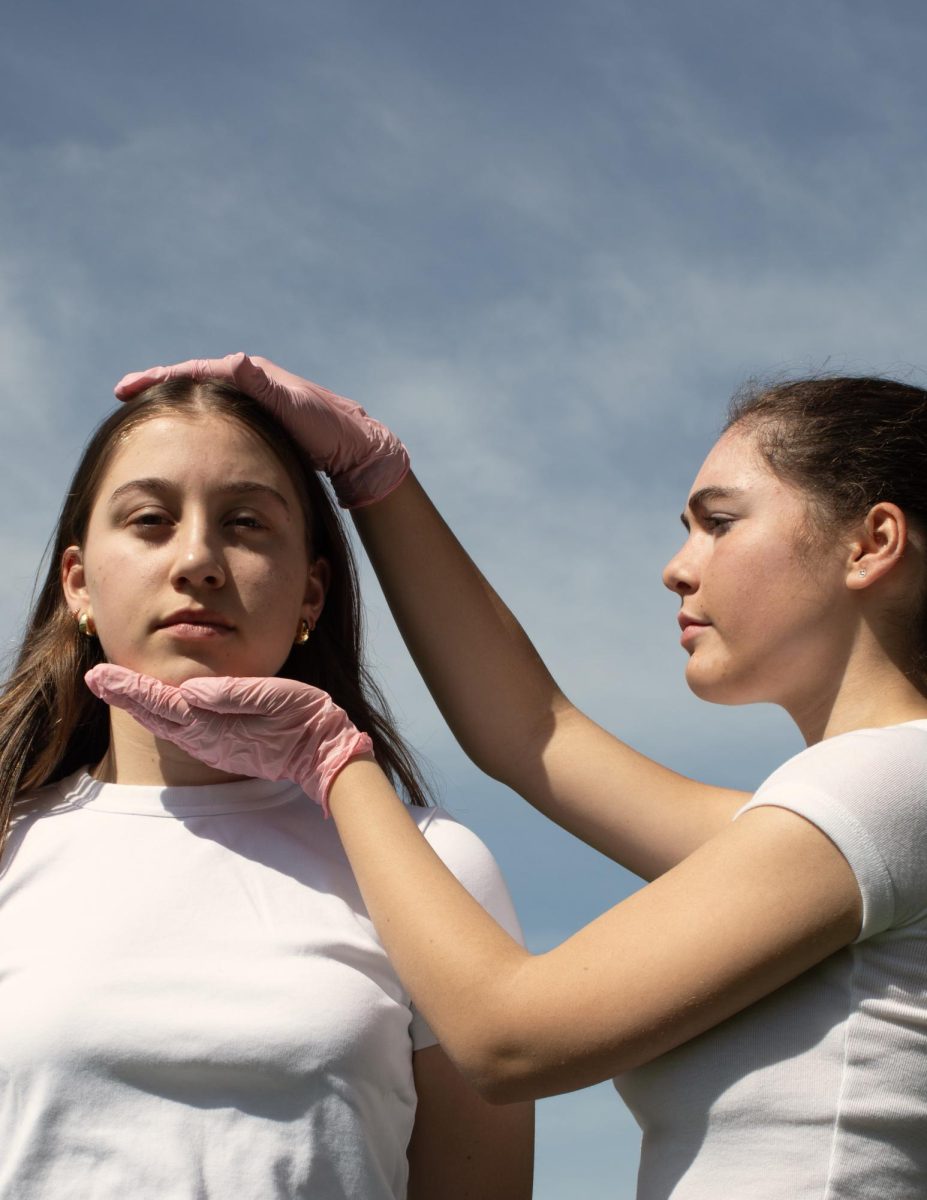
Seven freshmen do some serious roughing during a 2,000-mile tour of India over spring break, but trip includes meeting the Dalia Lama
Seven ninth graders and one teacher wrapped khatag, white scarves that symbolize purity, around the palms of their hands. They were going to meet His Holiness the Dalai Lama.
Their two weeks of spring break travel through 2,000 miles of Northern India included shower water laden with bacteria that attacked their intestines, a ten-hour ride on a train described as straight out of “Slumdog Millionaire,” four seven-hour bus rides over unpaved roads through impoverished slums, and Dharamsala where they met the Dalai Lama.
Yoga instructor Judith Sekler surprised the students with the opportunity to take pictures with the widely respected Tibetan Buddhist leader. The group travelled to his palace in Dharamsala and waited with approximately 120 people from all over the world. The group even saw Buddhist monks who had been on a month long meditation retreat for peace between China and the Dalai Lama.

During the photo op, the Dalai Lama invited Marlborough students and a few other groups to hold a private audience afterwards.
The meeting gave students a needed boost after a grueling beginning of the trip, Kathryn ’13 said.
“Everyone had been so sick and everyone was complaining, but the visit made other negative things not matter,” Kathryn said.
The Dalai Lama had a unique energy, Sekler said.
“His energy was palpable,” Sekler said. “He stressed that we need to have more humanity and compassion.”
Kathryn said the Dalai Lama spoke of peace and humility, which was uplifting to the students who had just witnessed such poverty in the Indian slums.
In addition to meeting the Dalai Lama, the ninth graders traversed a diverse cross-section of India with history instructor Martha Schuur, Sekler, and a guide from Studies Abroad for Global Education (SAGE).
Culture shock occurred as soon as the group stepped out of the Delhi airport. Dragging their luggage for ten minutes through a slum to find their hotel, the group passed cows, homeless encampments, kids playing in trash, and street vendors selling bangles, multicolored saris, and elaborately painted handmade wooden boxes.
The reality of the slums shocked students.
“I never had realized how bad the poverty is and how lucky we are in America,” Eliza ’13 said.
Lauren ’13 said that the trip made her appreciate all of the luxuries in her life, especially the availability of clean running water.
Immersed in the culture of the developing country, the group faced many challenges throughout the trip. Six of the travelers, including Schuur, acquired a severe intestinal bacterial infection from exposure to unfiltered water that lasted for about two days and required antibiotics.
“As more people got sick, we realized we were all going through it together and had to care for each other a lot,” Roxanna ’13 said.

After exploring Delhi, the group traveled to the Indian countryside on a ten-hour train ride. Schuur observed infants crawling on the train tracks, incredible poverty and filth, and people hanging off of the train, where bars replaced windows. The luxury compartment, where they stayed, consisted of sleeper units stacked in tight quarters, with no restroom or sink.
Because of the unsanitary and uncomfortable travelling conditions, Schuur and Sekler had to rework the itinerary and contract a private bus for the rest of the trip.
Sekler said the purpose of the trip was to explore Indian culture, with an emphasis on Buddhism, meditation, and yoga.
“The whole trip was yoga – getting from town to town, working cooperatively with the girls, helping Ms. Schuur get better. Yoga means to bring together, to unite a group of people, and that was our trip,” Sekler said.
Because of the difficulties in coordinating an international trip to India, Schuur said the school would not offer it as a spring break trip in the near future.
Article by Colleen ’10 and Julie ’10





